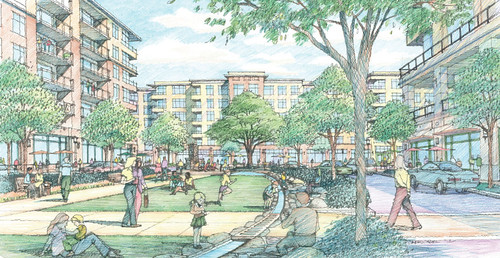What would Bus Rapid Transit mean for Montgomery County? I talk about the benefits of BRT alongside residents and community leaders in a new video produced by the Coalition for Smarter Growth.
A Rapid Transit Solution to Traffic from Coalition for Smarter Growth on Vimeo.
The video also features interviews with a variety of local residents and community leaders, including Planning Board member Casey Anderson, Friends of White Flint executive director Lindsay Hoffman, college student Jonathan Jayes-Green, local Sierra Club chair David Hauck, and activist Elaine Binder. Transportation planner Larry Cole, who led the BRT planning process, also talks about how traffic continues to increase in Montgomery County.
For almost 5 years, Montgomery County has been working on
a plan for a countywide BRT network, including routes on major corridors like Rockville Pike, Route 29, Georgia Avenue, and Veirs Mill Road. The plan, which the Planning Board approved last month, has
significant issues, but it's still
a huge step forward for the county as it seeks to accommodate new residents and workers while helping everyone get around more quickly and affordably.
We don't have room on our streets today to accommodate everyone in a car today, let alone in the future. If done properly, and if given its own dedicated lanes, BRT can give people a new transportation choice that's faster than driving will ever be in many of the county's congested corridors. We simply cannot afford not to make a significant investment in new transit that can support future growth, economic development, and environmental stewardship.
The plan goes before the County Council this fall, but first, they will hold
two public hearings on September 24 and 26 to hear from the community. If you'd like to show your support for BRT, you can
visit CSG's Next Generation of Transit website to learn more or
visit the council's website to sign up to testify or send written comments.








